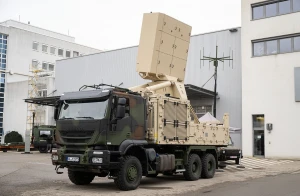
Why Russia attacks gas storage facilities in Ukraine's Lviv region
Why did Russia start targeting underground gas storage facilities in the Lviv region in the third year of the war? How crucial are these facilities for Ukraine's Gas Transmission System (GTS), and can they be destroyed physically?
For nearly two years after the full-scale invasion began, Russia refrained from attacking Ukraine's gas infrastructure, seemingly believing it still needed access to the Ukrainian GTS. However, with the current contract for Russian gas transit to the EU expiring at the end of 2024 and Naftogaz announcing it would not be extended, Russia launched its first missile attack on March 24, 2024, targeting a gas infrastructure facility. The Chairman of the Naftogaz (largest national oil and gas company of Ukraine) Oleksiy Chernyshov reported that Russia attacked an underground gas storage facility (UGS) in the Lviv region. Since then, Russia has intermittently targeted the Lviv region in attempts to disrupt gas injection operations.
Why are gas storage facilities being attacked?
Ukraine's extensive network of underground gas storage facilities is one of its greatest advantages in the Gas Transmission System. With a total active capacity exceeding 30.9 billion cubic meters, Ukraine ranks alongside only the USA and Russia in gas storage capability globally. In Europe, Ukrainian UGSs constitute the largest resource for gas storage and are actively utilized by European companies.
According to Naftogaz, as of early 2021, Ukrainian gas storage tanks were filled to 23.5 billion cubic meters, with 7.7 billion cubic meters owned by foreign companies from 24 countries. While gas storage isn't free, Ukraine has positioned itself as a reliable "gas safe" for Europe, particularly amid disruptions in Russian gas transit. This role could potentially become a primary income source for Naftogaz.
Since the start of the full-scale invasion, Ukrtransgaz (Naftogaz Group's subsidiary company) has stopped publishing statistics on gas storage in underground facilities. Despite the war in Ukraine, European traders continue to utilize Ukrainian storage sites due to Europe's own insufficient storage capacity.
According to The Economist, Western traders who risked storing nearly 3 billion cubic meters of gas in Ukraine earned up to 300 million euros from seasonal price differences. Ukraine allocated up to half of its storage capacity to European companies for the season, driven not only by storage fees but also by deeper integration with European energy markets.
"The more they can integrate their country’s energy industry with European markets, the more invested the EU will be in their defence. At a time when support from their allies appears shaky, that is worth quite a lot," writes The Economist.
In this context, Russia's attacks on UGSs in the Lviv region appear aimed at intimidating European companies engaged in gas storage.
Why are they attacking storage facilities in the Lviv region?
Industrial gas production in Ukraine originated in the Lviv region with the development of the Dashava field in the Bilche-Volytska oil and gas-bearing zone, beginning in 1924. By 1927, the Dashava-Stryi-Drohobych gas pipeline was constructed, followed by the Stryi-Mykolaiv-Lviv pipeline in 1939. After World War II, gas from the Stryi district was exported to Poland, Austria, Czechoslovakia, and Russia.
Due to extensive exploitation, the gas fields in the Bilche-Volytska zone have become depleted over time. In response, the Bilche-Volitske underground gas storage facility, inaugurated in 1983, was established as Europe's largest and one of the world's largest, with a capacity of 17 billion cubic meters of active gas - gas that can be injected and withdrawn. Interestingly, in 2022, a new series of underground gas storage facilities opened in northwest Turkey, with the Silivrian repository initially touted as Europe's largest despite its 4.6 billion cubic meter capacity.
Can Russian missiles destroy underground gas storage facilities?
Russian missiles cannot reach the underground gas storage facilities (UGSs) due to their considerable depth," stated Oleksiy Chernyshov following one of the attacks. He emphasized that while ground infrastructure may sustain damage, Ukraine's UGSs are primarily based in depleted gas fields, with only two out of thirteen relying on water-bearing structures. This depth - ranging from 400 m to 2000 m in the Lviv region - protects the gas from missile strikes that penetrate the soil layer.
However, missile strikes do cause significant damage to surface equipment such as compressors, control centers, and electrical substations crucial for UGS operations. These impacts disrupt gas injection processes and lead to substantial financial losses for Naftogaz. The primary concern, though, lies in eroding confidence among European traders who rely on Ukrainian UGSs for seasonal gas storage, impacting regional energy security.
- News












































